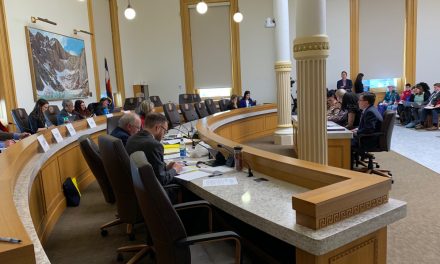A recent report from a children’s hospital in Kansas City confirms a deeply troubling trend in cases of child sexual assault: Almost half of the perpetrators named by victims were minors.
Children’s Mercy Hospital is home to numerous resources and programs dealing with child abuse and neglect, including the Sexual Assault Nurse Examiner (SANE) Program. SANE team members receive hours of special training to provide forensic and medical care to sexually abused children.
A local Kansas City television station reported that SANE team members see about 1,000 children a year who are victims of sexual assault. Data from the SANE program shows perpetrators are likely to be between 11 and 15 years old, with a majority of the victims being girls between the ages of 4 and 8 years old. While the facility is recognized for its work with victims of sexual abuse, it’s one of many, across the U.S., dealing with this growing problem.
According to Heidi Olson, coordinator of SANE, and Dr. Jennifer Hansen, a child abuse pediatrician at the hospital, pornography is a big part of children sexually and physically assaulting other children. “To sexually assault someone else, that’s a learned behavior,” said Olson.
While Children’s Mercy deals with the victims who were abused by another child, the Metropolitan Organization to Counter Sexual Assault (MOCSA) works with the perpetrators. Rene McCreary is the director of counseling services at MOCSA, working with children between the ages of 6 and 14 who have acted out sexually. She said, “What we are seeing is more and more kids that have sexual behavior problems and, at the same time, more and more children that have access to pornography.”
Pornography has become more accessible and more violent, and children who watch develop a distorted view of sexuality and relationships. Hansen also said, “Another thing we’re noticing is a lot of those sexual assaults are violent sexual assaults, so they include physical violence in addition to sexual violence.”
McCreary agreed, “Pornography is different today than it used to be. So, 80 percent of the 15 most-viewed films portray women being hit, spit on, kicked, called degrading names. … Pornography has become more violent.”
Pastoral counselor John Thorington, D. Min., agrees that these are growing problems that he’s dealt with in both his private practice and while responding to calls here at Focus on the Family. He says viewing sexual activity – and violent sexual activity – “Interferes with a child’s normal development and identity, incites children to act out on other children, and leads to earlier sexual activity.
An International Problem
Rising numbers of children abusing other children is not just an issue here in the U.S. Reports from the United Kingdom and Ireland also show growing rates of sexual offenses committed by minors. And again, pornography is a leading factor.
Data from police in England and Wales showed “peer on peer” abuse almost doubling in four years: from 4,603 in 2013 to 7,866 in 2016. Numbers from 30 different police forces showed sexual offences by children under age ten more than doubled from 204 in 2013-14 to 456 in 2016-17.
Mary Sharpe is Chief Executive of The Reward Foundation, a group in Scotland working to help those addicted to pornography. She says that the rates will continue to rise unless something is done to protect children from pornography. Her organization teaches “how internet pornography trains the teen brain to want to carry out such acts.”
In a review of the literature, “Children and Young People with Harmful Sexual Behaviors,” researcher Simon Hacket says that children and young people make up about one-fourth of the convictions for sexual abuse the U.K.
Police reports in Ireland also show an escalation in numbers of minors committing sexual offenses; in 2016, “Juvenile offenders carried out almost half of all sexual offences.” Clíona Saidléar, executive director of Rape Crisis Network Ireland cited the normalization of pornography as a contributing factor.
Healing for Child Victims and Child Perpetrators
Rob Jackson, MS, LPC, has more than 30 years’ experience as a professional counselor; the past 18 years he’s specialized in treating broken sexuality, including those affected by sexual addiction, pornography usage and sexual abuse. As a counselor in private practice and on staff at Focus on the Family, he acknowledges the rising tide of children exposed to pornography. “Over the years Focus has seen a dramatic increase in our call volume related to children exposed to pornography at earlier ages than before the onset of the Internet.”
He describes the negative impact of pornography exposure for children this way:
Pornography seduces and deceives the child’s spirit, mind, and body, creating deceitful desires, damaged emotions, distorted thoughts, and reactive behaviors relative to the child’s innate, God-given sexuality. Exposed to porn at an early age, a child cannot have a mature, moral compass for sexual expressions that honor God, himself, and others. Lacking knowledge and experience of God’s authentic design for sexuality, he is left with an ever-emerging sexual counterfeit that can migrate from a one-time behavior (his initial exposure), to a habit, a compulsion, and an eventual addiction.
Both Rob Jackson and John Thorington say that children affected by pornography – including those who then go on to abuse other children – can find healing, forgiveness and restoration. Thorington says healing begins with “a good evaluation of sexual history and an overall global assessment of the individual.” A qualified counselor will then help develop “a treatment plan with specified services,” possibly including family therapy, individual therapy and even pharmacological intervention.
Jackson says that in his experience, “The child or adolescent was once a victim himself, and may actually perpetrate against children who are of the age he was, when he was victimized.” A skilled counselor can help the child deal with his own victimization, develop empathy for his victim, take responsibility for his actions and “learn to depend on the power of the Holy Spirit for the ongoing grace to recover.”
It’s important for parents to be aware of this growing trend and work to educate and protect their children. But Jackson also says, “Regardless of filters, time limits, and other behavioral strategies, parents can’t monitor their child’s every waking moment, nor can they make their child’s choices throughout the day. It’s no longer a question of will my child be exposed to pornography, but rather when will he be exposed.”
Focus on the Family has a number of resources to help parents and children affected by pornography or child sexual abuse.
- Focus on the Family offers a one-time complimentary consultation from a Christian perspective. To reach Focus on the Family’s counseling service by phone, call 1-855-771-HELP (4357) weekdays 6:00 a.m. to 8:00 p.m. (Mountain Time). Please be prepared to leave your contact information for a counselor or chaplain to return a call to you as soon as possible. The consultation is available at no cost to you. You may also reach our counselors online by filling out our Counseling Request Form.
- Through our Christian Counselors Network, we offer referrals for licensed Christian counselors in your area.
- Focus on the Family’s Parenting and Youth Department has numerous articles and resources that deal with raising children in today’s sexually broken and technologically advanced world.
- Our online bookstore has numerous resources, including John Thorington’s book Pure Teens: Honoring God, Relationships, and Sex.
- We encourage parents to instill in their children a healthy, biblical view of sexuality – before they encounter pornography. Our free, downloadable resource The Talk: Healthy Sexuality Education—Basic Goals and Guidance from Focus on the Family has age-appropriate guidance and suggestions to help parents with this important task.






